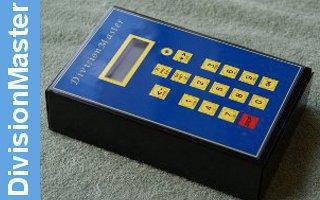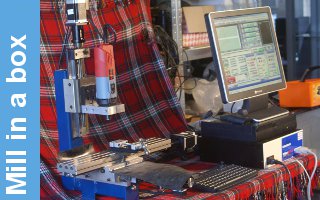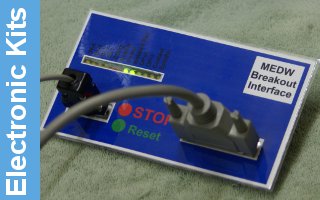HRP Tender and Water tanks
One feels that the finest choice of material for a tender would be brass, which forms easily enough in fact so does steel, but since the tender will contain water and by its very design must always contain air too, rusting will be very much more rapid than in a boiler, and therefore the life of a tender in steel must be relatively short. There is always the possibility of picking up particles of rust scale, and these passing through to the injector. I can recall having trouble with the engine 'LION' on the journey home from the West Country, caused by the tender tank being rusted awav in the coal bunker and letting coal dust down into the tender water tank; this then being picked up by the injector. Consequently the injector had to be dismantled and the coal particles removed. The same problem is easily experienced with rust particles, on a model.
If, from the point of view of economy, the builder must use steel, then sometimes it is possible to obtain some very thin copper or brass sheet quite cheaply, and make a tank which can be inserted into the steel outer. This of course will need non-ferrous connections through to the water filler cap and to the injector and lifter flanges, otherwise the object will be defeated.
TENDER. The tender of an engine is always a very noticeable feature. The flanging of the tender plates may offer a challenge to the average modeller and undoubtedly if nicely carried out will enhance your model. Flanging of the main tender side plates, e.g.: on a Burrell engine, is more tedious than difficult, and briefly the procedure is the same as for the tubeplates of a boiler, but unfortunately, rather more involved. One of the greatest bogeys of the forming is the risk of putting permanent and considerable kinks in the main area of the plate, whilst forming the edges. The distortion, when it occurs, is brought about by the heat which is applied to the flanged section during annealing, travelling out into the main plate. Therefore, when carrying out the annealing operation, the work should be clamped where possible between a metal former, with suitable bars of metal (preferably brass) on the other side. The former and these metal bars will be positioned so that they are approximately one inch back from the cut edge of metal or tender side, and a fairly hot flame such as oxy acetylene or a smallish fierce Calor gas flame applied to the edge to be formed; bringing it just to a dull red heat. Commence at one end, and gradually move along as the plate becomes red. During this operation, an added safeguard is to put a piece of wet rag over the centre portion of the tender side, thus preventing heat travelling into it. Great care must be taken when annealing brass because it will become soft at a dull red heat, and will melt at just above bright red, so there is not much leeway. A small hot flame is preferable since a large flame will create a lot of general heat, and distortion with it.
After carrying out the annealing and allowing the plate to cool (never do this with water) the former will then be moved back into the correct position for forming, and the metal bars clamped opposite on the other side with several 'G' clamps; beating can then commence. The straight flanges can usually be formed up with a hammer at the first attempt, whereas curves, both outside and inside ones, will require annealing perhaps three or four times each, although you will be well advised to anneal all round the plate at each successive forming. The same procedure must be carried out at the next annealing, with the metal former moved back from the edge sufficiently to allow this to become red hot, and yet acting as a barrier to prevent the heat travelling inwards; after which, when cool, the former will be brought back into position. The work can be clamped in the vice during the beatings leaving the 'G' clamps in position. Always trim off surplus metal from the flange as early as possible in the forming operations.
A word here on the actual forming. This can be done very satisfactorily with a hammer, but always endeavour to use it so as to strike the work flat, otherwise there will be a lot of dents from the edge of the hammer itself. Always beat on the flat portion of the flange, which will ultimately be mated up to another plate, thus leaving formed curves completely unspoilt by the hammer. Reverse curves, such as the one encountered just below the top of a Burrell tender, are best taken fairly slowly so as to avoid any tendency of splitting. While carrying this out, the tender plates should be firmly clamped between the former and the metal strips already mentioned. This reverse curve can finally be brought down into position to exactly follow the former, by use of a piece of round steel rod being rested against the brass to be formed, and then being struck sharply with a hammer. Naturally enough, you must choose a piece of steel rod which has a similar radius to that of the tender.
However, engines vary with their flanging, in that some engines like the Fowler often have the flanges formed on the back plate of the tender, instead of on the side plate, as Burrell engines. There is little difference in the forming, although probably those on the back plates are easier to shape, as there would be less area of plate to distort, when carrying out the annealing procedure.
Builders are often a little puzzled as to how to rivet up a tender successfully. The difficulty is that some of the rivets are only accessible on the outside. It must be borne in mind, that on the original engines there were large manholes, both for cleaning out during the use of the engine, and also, in some instances, to facilitate the rivetting up of the particular boiler or tank in which they appear. After forming the two sides of the Burrell tender, it is best to commence rivetting up the tender floor (water tank top) at the rear of tender where it meets the rear wall, rivetting along the floor, and then down the front wall, this is immediately behind the axle. The same procedure can be carried out but attaching the other side plate to this floor sheet. After this the floor sheet will be sharply bent and rivetted along the underside of the tender on both sides. This rivetting will be carried out easily enough, until you come to the point at which the rear of the tender begins to curve upwards. Here, the back plate of the tender must be formed round to follow the curve of the side plate, and the rivets will be inaccessible on the inside, but this is only for a short distance, until you reach the point where the rivets can be inserted and riveted over, immediately above the floor of the coal bunker. Remember that these rivets should have a round or snap head on both sides, and care should be taken to achieve this, and to keep the heads nicely in line. A second person will be required to hold the tender in place during the forming of the rivet heads, while the under side is supported by a dolly held in the vice. The rivet head you are forming should be carefully studied before it is brought completely down onto the plate, as it is possible to correct its position by knocking it sideways, provided this is not left too late in the rivetting operation. Rivets may be simply pushed into drilled holes at the point round the curve and below the tank top, where the inside is inaccessible. The plate should lay very closely against this curve, and ultimately you will flow soft solder right through this joint, thus locking the rivets and the plate in place permanently.
In very large model engines, it is often found to be impractical to make the tender floor, underside, and back plate sheet in one piece, and therefore a good practice is to cut this in two, possibly joining by a small overlap at the front bottom of the tender tank, immediately behind the axle.
When soldering up, use a small flame so as to heat up a small area at a time to nicely reach soldering temperature. Flow the solder all over the rivet heads and into the seams, wiping off any surplus with a piece of cloth damped in Bakers Fluid, while the solder is hot. You will find that a beautiful result can be obtained if carried out intelligently, the solder forming a very fine radius where the rivet heads join the plate, producing a very pleasing appearance, and, of course, completely water tight. Coal walls should be carefully rivetted up with round heads on both sides of the plate; although there is no absolute need to flow over with solder. But perhaps it is a good idea to seal the coal bunker wall with solder, since from time to time water may be splashed into the tender, and it may well make its way along under a coal wall seam, and make a wet mess of coal dust in the bottom of the bunker.
The 'D* beading, or half round beading (brass), which one normally fits to the top of a tender, can be rivetted in place, using countersunk brass rivets and spacing them out at intervals, ultimately making the job permanent by flowing solder through. One all important point about this 'D' beading, is that generally it does not appear to anneal. This section is probably extruded, and it may be the grain structure is such, that after extrusion, it is difficult to break down. However, it will bend very satisfactorily red hot, and therefore presents no great problem.
You will see on studying a traction engine tow bar that it is usually made of a piece of 'U' section steel, carried across the width of the rear of the tender, and this tow bar is attached to heavy gauge strip metal which passes along the sides of the tender and spreads out either side of the axle. It is then attached through the tender to the hornplates, with several bolts above and below the axle, the idea being that the strain imposed during hauling will not be taken on the water tank or tender; this saves likely fracture or distortion and ultimate leak. Sometimes, as in the case of Burrell engines, these side strips were attached to the tender by a few rivets to keep them in line, whereas other engines, such as Fowler, often had no connection through the tender sides to the draw bar, and the rear end was kept in place by an angle bracket rivetted to the tender, above and below the tow bar channel section at the rear.
Some builders seem a little mystified as to the fixing of the tender onto the engine. Therefore it should be understood that the attachment is boiler to hornplates, these protruding beyond the boiler, and then the tender sides bolting onto this extension.
FOOTPLATES. These are all important to the authenticity of the finished model. It should be realised in normal foot-plating that the squares or diamonds were sunk in the plate, leaving thin webs in-between for the foot to grip on; so one can see that it is not possible to take a piece of plate, and machine diagonal or square slots in this to produce the correct effect, as this will be exactly the reverse to correct procedure. The Burrell engines, however, did have a few straightforward slots on the combined hose bracket and step, found on the side of some of the tenders.
Injectors will normally fit to a flange at the bottom rear of the tender side, there being a shut off water cock between the injector itself and this flange. There will be a box for water filling in the tender of engines which do not have a belly tank, and those which do, such as Fowler Showmans engines, will have a water filler box on the belly tank. This tank is then joined to the rear tender tank via a stout pipe, which is often made in two pieces, incorporating a joint-type gland to allow for expansion. This equalising pipe will generally carry a shut off cock, so one can use the tanks to create a reserve, such as one would do with the petrol tank of a car.
The water pump pipes must pass through the floor of the tender in order to lift the water; the usual fitting is one breather pipe in the front near the boiler, so that air can easily be admitted to the tender; this pipe is long enough to prevent splashing from its open end. Thus air can enter as water is taken out and no vacuum is caused. Next will come the lifting pipe, from the inlet of the pump, through a union at tender floor level, and the pipe then passes to just short of the bottom of the tender, in order to pick up the last few drops of water. The rearmost pipe is usually the return pipe from the outlet of the pump. Most traction engine water pumps work on the principle of continually pumping the water, either into the boiler as required, or by a by-pass pipe back into the tender. When the by-pass cock is locked in the half-way position, some water passes to the boiler and some back to the tender. This system is a good one because these pumps do not normally start easily when they are empty and the balls are dry, and therefore, by being continuously full of water, the pump will always act immediately it is required.
On the tender will also be found the ejector or water lifter. An ejector is basically an injector which works against no more than atmospheric pressure. It is in fact generally a tube within a tube; thus the inner one blows a jet of steam through the outer, so drawing water around itself and jetting this into the tender when the hose of the lifter is put into a convenient water supply. On the original engines the pipe was lowered into a river or stream, and the pipe always terminated in a strainer (filter) since the suction was quite great, and would lift weed and other foreign matter from the river bed, causing blockage of the lifter. One does not see many working water lifters on models. This is a pity, because they are simple enough to make and there is no difficulty in working them very effectively; in fact they work so well that the lifter will fill the tender tank much faster than it can possibly be filled by pouring. The writer's own 3" Burrell lifter was capable of filling the tender tank in under 45 seconds. This looks good on a rally field and it is also extremely efficient. A lifter, if properly made, does not need a very great pressure to work it, and it does not need very much steam. The critical point of a water lifter is the adjustment or position of the steam jet in relation to the surrounding water tube, and on making the lifter, it is a good idea to leave the final fixing of the steam jet until you can try it with air, when an ideal point will be found where maximum suction is obtained with minimum air; after which finally check with steam and make the jet permanent in this position. Both injector steam pipe and the water lifter steam pipe will generally pass down from the steam manifold at top rear of boiler, and-along inside the tender sides right close in to the corner, and then through the wall via holes just large enough for this purpose. These holes will be in the corners, immediately in front of the coal wall. Then they will go straight along to the working parts which they feed. A small union is often desirable just inside the tender, to facilitate assembly and dismantling.
The belly tanks, or side tanks in the Simplicity Rollers, have some plates where the flanging is continuous all around the edges. The builder will need to make a former for these from hard wood (metal would be even better). A straightforward way to make a former is to have an accurate flame-cut, made from a piece of steel, which is just thick enough to cover the width of the flange to be formed. Then file the necessary radius at the corners on both sides and sand the edges. After this it will be possible to form up the plates on both sides of the tank on the same former.
HOSE PIPE. The hose pipe of a traction engine seems to present some difficulty, due to the fact that it is not usually possible to obtain a suitable piece of, piping. Some of the high pressure hoses used in industry would appear at first glance to be suitable, but generally they have such small bores that they will not pass water quickly enough. It is possible, however, to make a satisfactory hose in the following manner:- Obtain a piece of rubber tubing from your local chemist. This will be a thin walled flexible rubber tubing, and as bought, will be unsatisfactory, since the suction will close it together. It is sometimes possible to obtain a long brass spring which will slip inside the tube, but really there is no need for this. A spring may be wound from brass wire, so that it will just slip over the outside of the tube. This will entirely prevent closure of the tube by suction, since, for the tube to close at one point, it will also need to widen at another, and the spring makes this impossible. We now have an effective hose tube, but still need to make it look authentic, and this can be done by carefully binding over with black insulation tape or one of the modern plastic tapes; the tube will then take on the appearance of some of the original hoses which were made in this same manner, except that they had a spring both inside and outside. The weed strainer can be machined up on the lathe.










